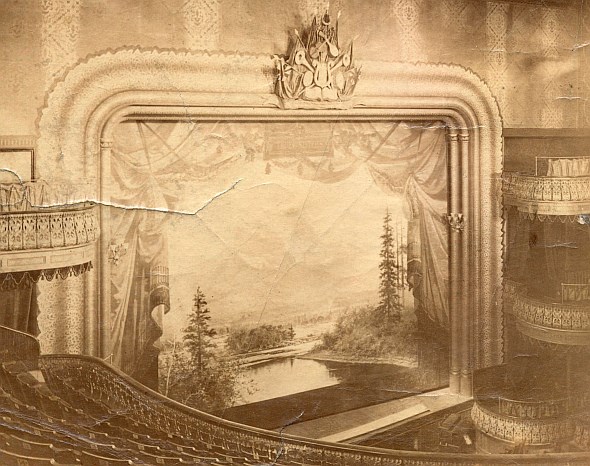
The Interior of the Â鶹´«Ã½Ó³»Opera House, () Photo by William Stark
Theatre backdrops can be very temporal artifacts, painted at grand scale, and then carted off stage or perhaps painted over for the next show. The artists who paint these backdrops most likely never managed to get top billing on the programs if they were credited at all, making them a very elusive bunch to track down. Fortunately, we do have some record of their work, most typically in publicity photography taken on stage.
With the recent upgrade to the , photos like these become a whole lot easier to find and enjoy. I've collected a small gallery of images featuring some Â鶹´«Ã½Ó³»backdrops which showcase the stage, theatres, and performers alike.
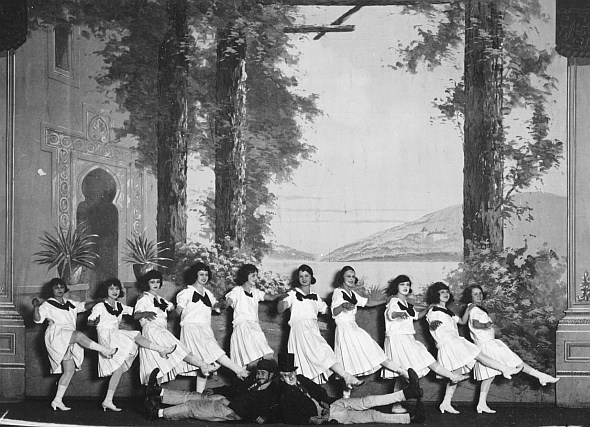
The Columbia Theatre, 1920 () Photo by Stuart Thomson
The Columbia Theatre was situated at 64 West Hastings, across the street from where the Paris Block is today. Here's by Stuart Thomson.
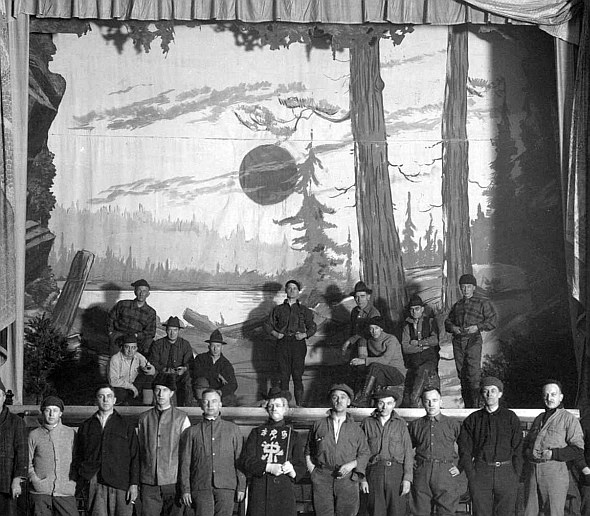
The Kiwanis Glee Club at the Capitol Theatre, 1922 ()ÌýPhoto by Stuart Thomson
This image was taken just prior to Christmas, 1922, and incidentally, it was just 2 months earlier that the Harold Lloyd comedy Grandma's Boy played at the very same theatre (October 2-7, 1922).
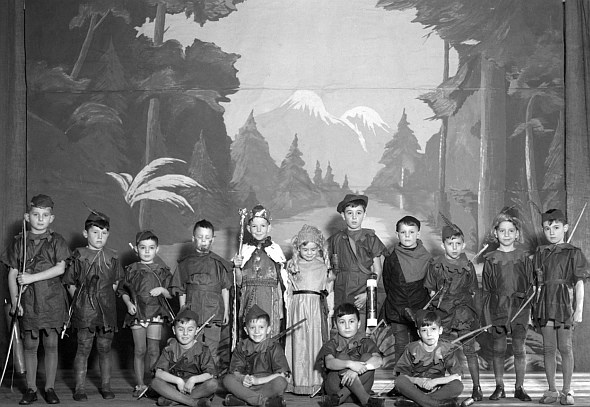
St. George's School play "Robin Hood", 1939 () Photo by the Dominion Photo Co.
This image above is a fairly recent addition to the Â鶹´«Ã½Ó³»Archives, donated in 2008 by Nigel Toy, St. George's School Headmaster. It goes to show you how important artifacts of a city's history can still be found in private collections everywhere! This serves as a great reminder to everyone - if you have such artifacts in your possession, consider donating them to the archives. And thanks Nigel, for this donation!
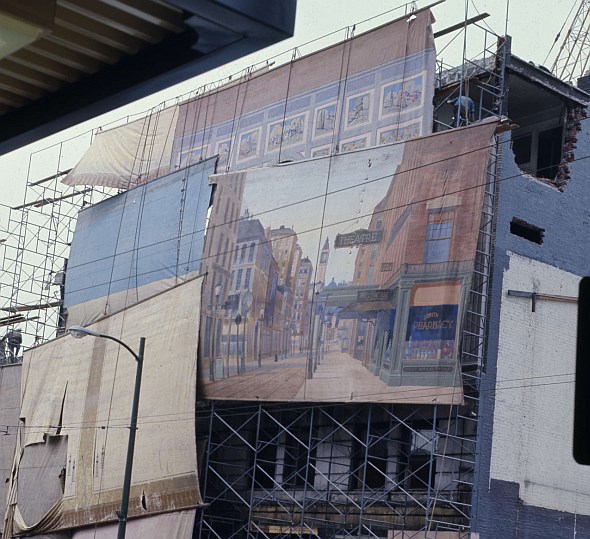
Demolition of the Lyric Theatre, 700 block Granville, 1969 ()ÌýPhoto by Nicholas Russell
This final image shows the important work of engaged citizens, documenting their city's history. According to the Â鶹´«Ã½Ó³»Archives, Nicholas Russell lived in Vancouver's West End in 1968, and he was very concerned about the demolition of the older wooden houses in the West End. His photography also captured many homes that are no longer in existence today. In a way, everyone who helped to document the Grandma's Boy ghost sign was following in Nicholas Russell's footsteps, providing a visual record of our city for future generations.
For further reading, I've written even more about this post over at . I'm taking a little hiatus, but I plan to be back soon! In the mean time, keep documenting the city while I'm away!


